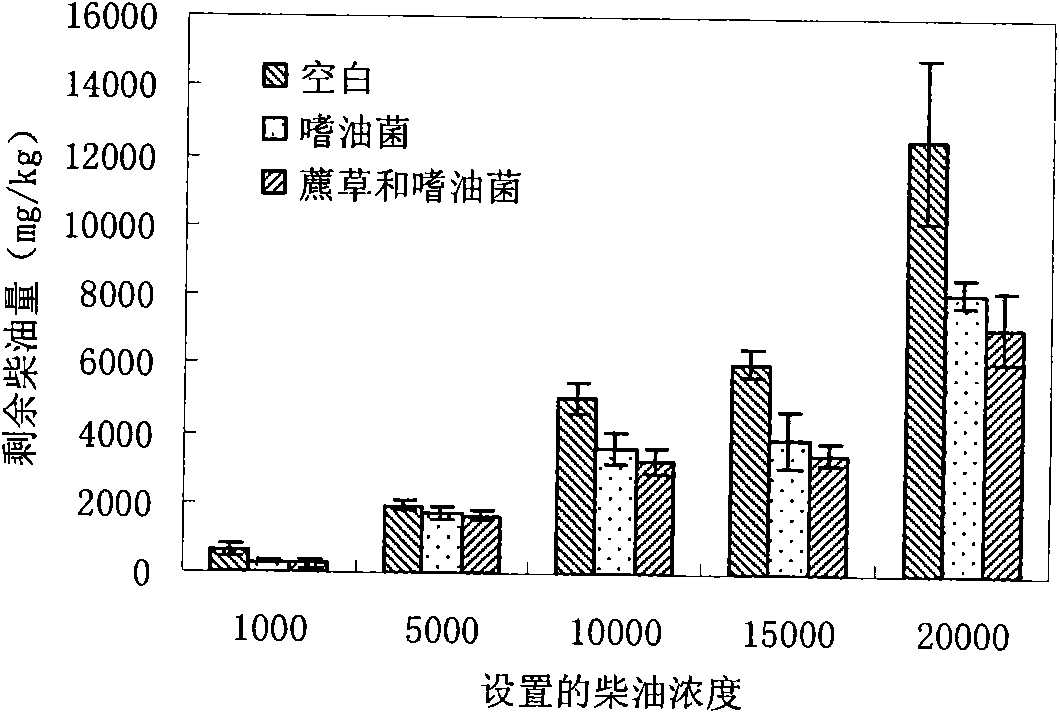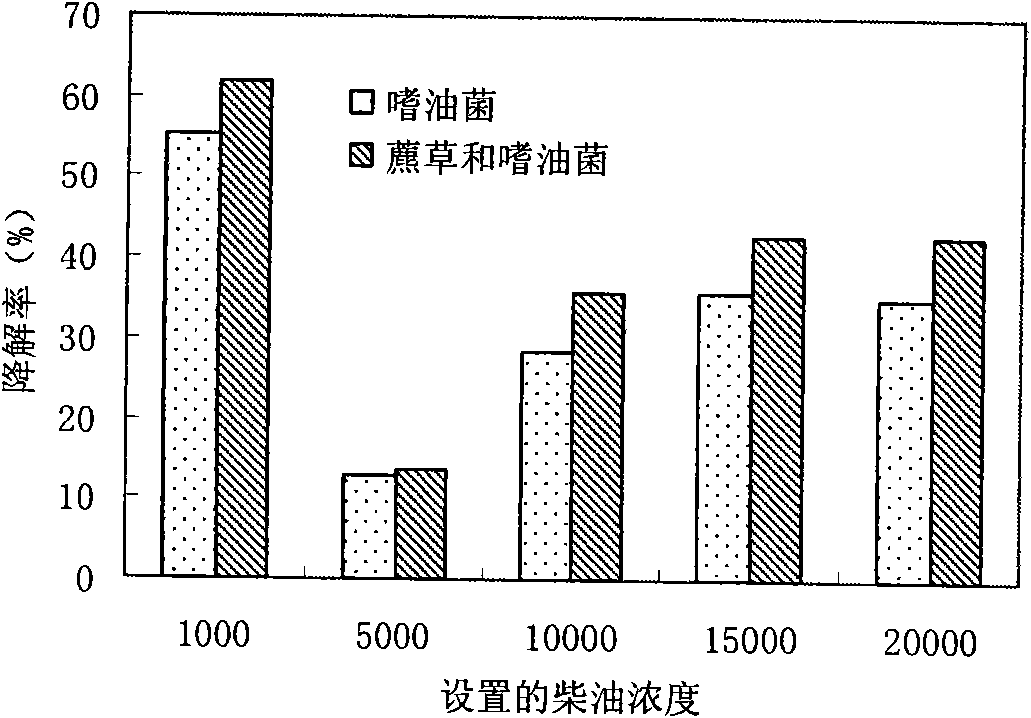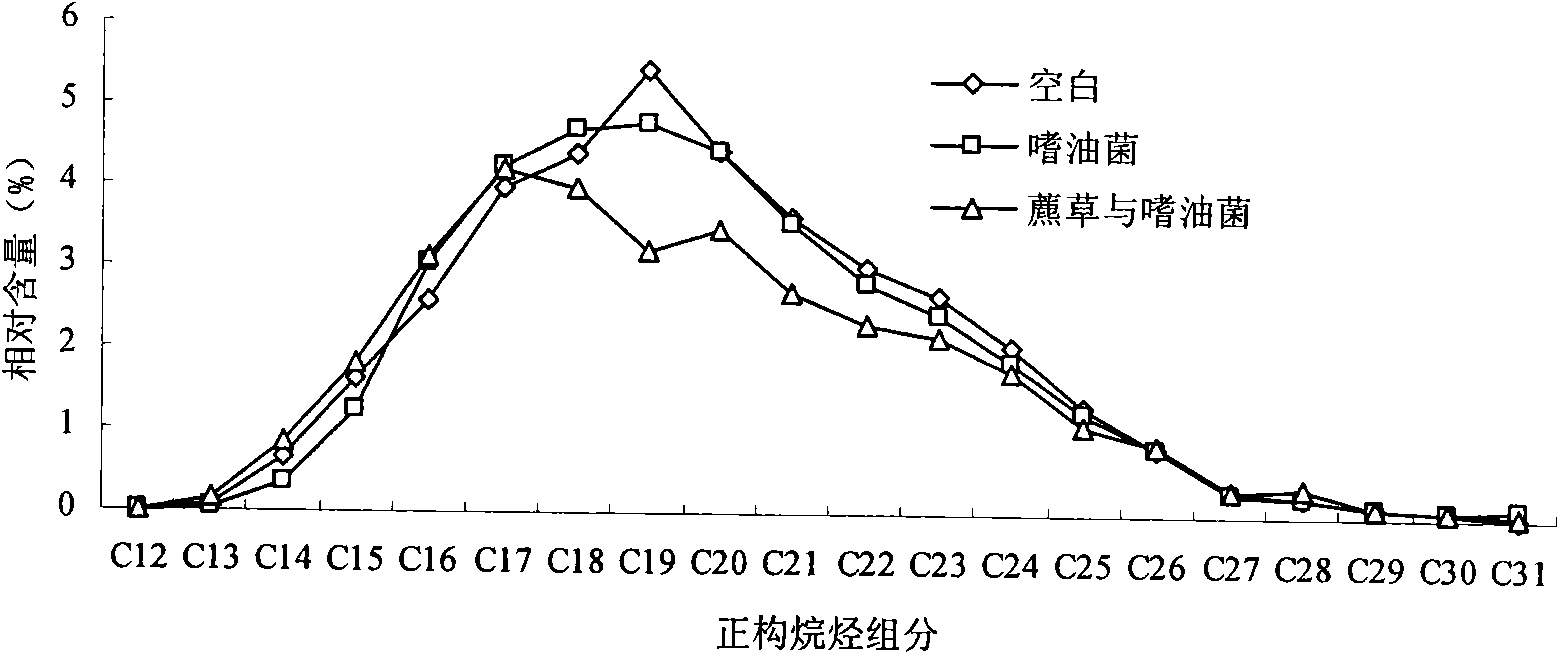Method for restoring oil polluted wet land by combination of plant and microorganism
A technology of microbial remediation and joint remediation, which is applied in the field of joint remediation of oil-polluted wetlands by plants and microorganisms, can solve problems such as loss of active sites for microorganisms, adverse effects of microorganisms, and clogging of soil pores, so as to improve soil degradation and productivity decline, and achieve good ecological benefits. , the effect of small engineering
- Summary
- Abstract
- Description
- Claims
- Application Information
AI Technical Summary
Problems solved by technology
Method used
Image
Examples
Embodiment Construction
[0025] Diesel for testing:
[0026] The diesel for testing is No. 0 diesel oil: purchased from Sinopec Minghe Gas Station in Baoshan District, Shanghai.
[0027] Example of Implementation: Outdoor Trials of Degreasing Oleophilic Bacteria and Indigenous Oleophilic Bacteria
[0028] This experiment was carried out in August 2009. The experimental site is the open-air balcony on the fifth floor of the Environmental and Chemical Laboratory Building of Shanghai University. The institute is located in Baoshan District, Shanghai, which belongs to the humid zone and semi-humid continental monsoon climate, with an annual precipitation of about 500-600. The original oil-contaminated soil used in the test was taken from the Huangpu River-Yangtze River estuary wetland soil, and the three oilophilic strains used in this experiment were screened out from it. The clean soil was taken from the flower bed in the East District of Shanghai University. After passing through a 2mm sieve, the soi...
PUM
 Login to View More
Login to View More Abstract
Description
Claims
Application Information
 Login to View More
Login to View More - R&D
- Intellectual Property
- Life Sciences
- Materials
- Tech Scout
- Unparalleled Data Quality
- Higher Quality Content
- 60% Fewer Hallucinations
Browse by: Latest US Patents, China's latest patents, Technical Efficacy Thesaurus, Application Domain, Technology Topic, Popular Technical Reports.
© 2025 PatSnap. All rights reserved.Legal|Privacy policy|Modern Slavery Act Transparency Statement|Sitemap|About US| Contact US: help@patsnap.com



